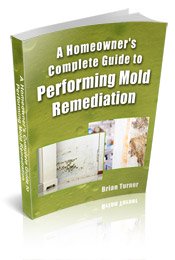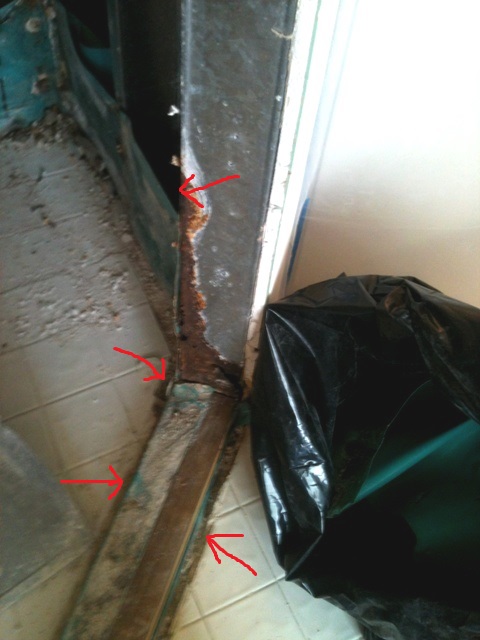Find a Mold Specialist Now
Click or Call, Toll-Free 24/7
Bathroom Mold
Before you begin the process of removing bathroom mold, you need to identify the cause of the mold problem and fix any leaks. Otherwise you’ll soon be right back where you started, struggling with removing mold in the bathroom again.

Bathrooms are usually warm, moist environments, making a perfect place for mold to grow. Mold also grows on organic matter like soap scum, again making bathrooms ideal environments for mold to grow. If you’ve had a leaky pipe under the sink or behind the toilet, or a leak in the bathroom roof, you’ve got other potential causes of mold. Some leaks are very noticeable right away but others are small and can leak for quite some time before you notice anything is amiss. If you notice a musty smell in your bathroom, you should make a closer inspection for mold. Water stains on the walls or ceiling are another sign of a mold problem.
If you suspect a mold problem in your bathroom but aren’t sure, you can call a mold removal specialist to come in and conduct a free inspection for you. Just follow the link at the end of this article to find a specialist in your area.
Removing Bathroom Mold
If you choose to tackle the task on your own, scrub any nonporous areas like your tub or shower with a biocide designed to kill molds. Look for a biocide product at hardware and home improvement stores.
Wear protective clothing for the job: an outfit you will launder right after you finish removing bathroom mold, heavy rubber gloves, an N-95 respirator or face mask, and eye goggles. You can buy the protective gear you need at most hardware or home improvement stores. You should find what you need wherever you buy your biocide for removing mold.
Ventilate the area as well as you can, by opening any windows. We recommend using a negative air machine to remove any mold spores that become airborne during the removal process. Hang sheets of plastic to isolate the bathroom area from the rest of your house so mold spores do not spread to the rest of the house.
If there is mold inside the walls, such as mold
growing on wall studs, they may need to be sanded to remove all of the mold.
Scrubbing doesn’t often work since wood is porous, according to the
North Dakota State University Extension Service. Please be aware that sanding moldy wood releases mold spores into the air, and can be very dangerous. We recommend that only trained professionals attempt to sand moldy wood.
Unfortunately, in many cases drywall, ceiling tiles and carpet cannot be saved and must be discarded and replaced in order to make your home safe again. Seal drywall, carpet pieces and other materials to be discarded in large plastic trash bags before carrying them through your home so you don’t deposit mold spores throughout your house.
You can probably scrub the mold off bathroom tiles, though, if it’s growing there on soap scum. Try to plan a time for removing bathroom mold when you can disinfect the entire bathroom in a short period of time, so mold does not have a chance to begin to regrow once you’ve started removing it. You don’t want to have to repeat the job twice.
We recommend having a test of the air conducted after the mold is removed to make sure it’s all gone and your bathroom is safe again. Any mold removal specialist should be able to conduct the test for you. We don’t recommend the tests you can purchase and run yourself, though, because they simply are not as accurate as professional tests.
When to Call a Professional for Help with Mold Removal in the Bathroom
Under some circumstances, we recommend calling a professional to assist you with mold removal in the bathroom.
- If you suspect mold is growing inside your bathroom walls, under the carpet or tile flooring (like in the picture), or above the ceiling tiles, we recommend calling a professional for assistance.
- If you suspect mold might be growing in the heating ducts in your bathroom, we recommend calling a professional.
- If you’re not sure if mold has spread to other areas of your home, we recommend calling a professional that can test your entire home for mold.
- If you’re experiencing symptoms of mold-related health problems, we recommend hiring a professional to handle the mold removal. Doing the job yourself would expose you to further health risks.
Follow this link to schedule a free consultation with a mold removal specialist to assist with mold in your bathroom or elsewhere in your home.
Return From Bathroom Mold To Our Mold In Homes Page
Black Mold Health Symptoms Home Page






